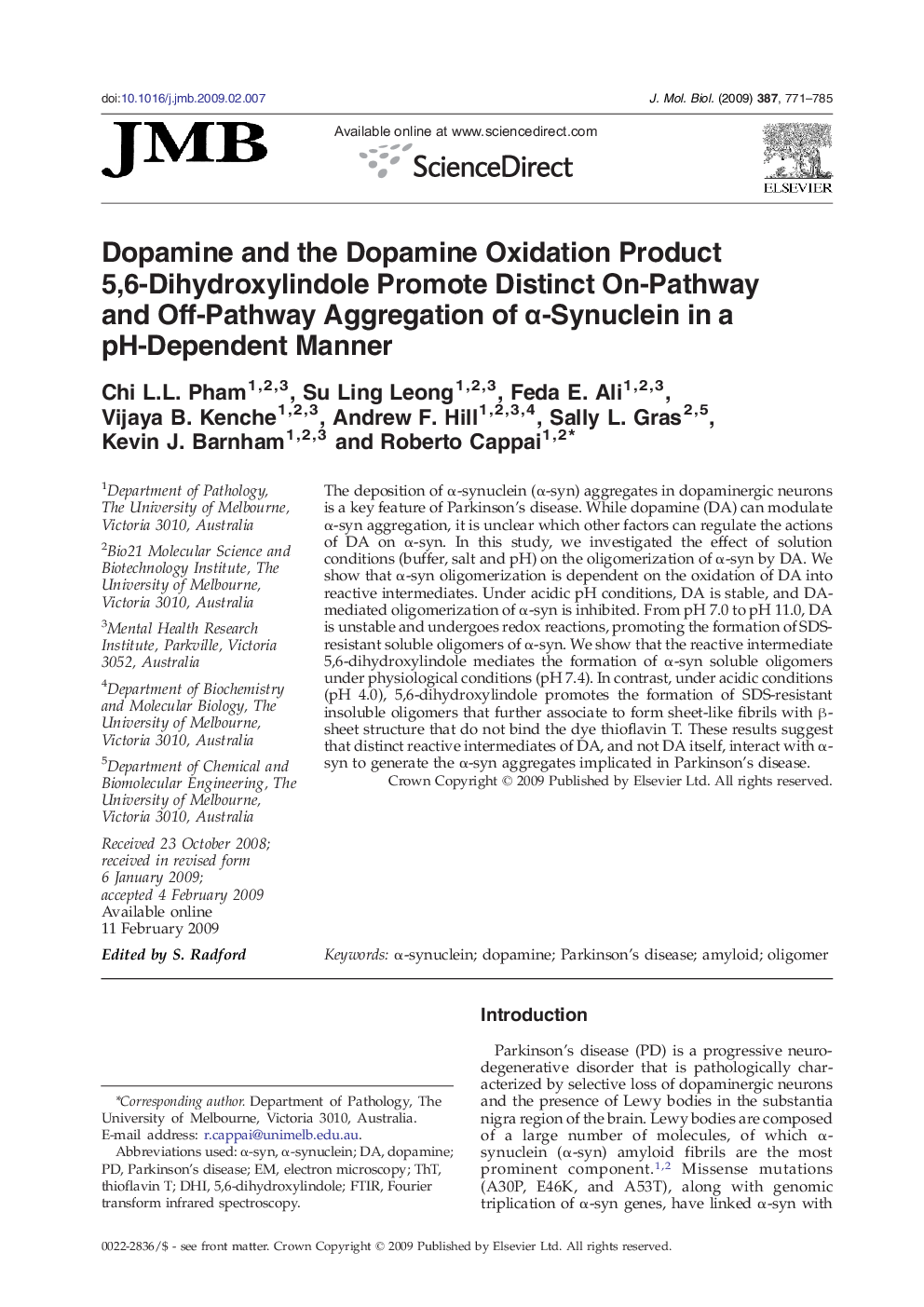| Article ID | Journal | Published Year | Pages | File Type |
|---|---|---|---|---|
| 2186665 | Journal of Molecular Biology | 2009 | 15 Pages |
The deposition of α-synuclein (α-syn) aggregates in dopaminergic neurons is a key feature of Parkinson's disease. While dopamine (DA) can modulate α-syn aggregation, it is unclear which other factors can regulate the actions of DA on α-syn. In this study, we investigated the effect of solution conditions (buffer, salt and pH) on the oligomerization of α-syn by DA. We show that α-syn oligomerization is dependent on the oxidation of DA into reactive intermediates. Under acidic pH conditions, DA is stable, and DA-mediated oligomerization of α-syn is inhibited. From pH 7.0 to pH 11.0, DA is unstable and undergoes redox reactions, promoting the formation of SDS-resistant soluble oligomers of α-syn. We show that the reactive intermediate 5,6-dihydroxylindole mediates the formation of α-syn soluble oligomers under physiological conditions (pH 7.4). In contrast, under acidic conditions (pH 4.0), 5,6-dihydroxylindole promotes the formation of SDS-resistant insoluble oligomers that further associate to form sheet-like fibrils with β-sheet structure that do not bind the dye thioflavin T. These results suggest that distinct reactive intermediates of DA, and not DA itself, interact with α-syn to generate the α-syn aggregates implicated in Parkinson's disease.
